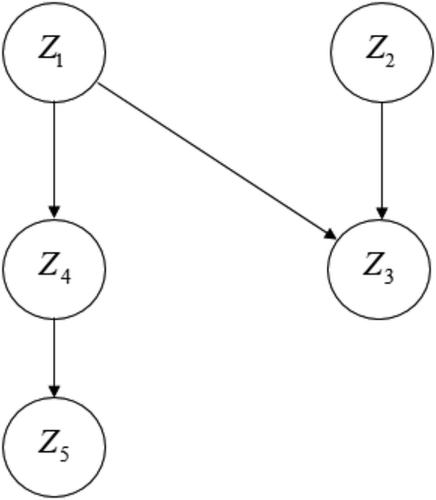当前位置:
X-MOL 学术
›
Meteorol. Appl.
›
论文详情
Our official English website, www.x-mol.net, welcomes your
feedback! (Note: you will need to create a separate account there.)
A seasonally blended and regionally integrated drought index using Bayesian network theory
Meteorological Applications ( IF 2.3 ) Pub Date : 2021-05-07 , DOI: 10.1002/met.1992 Ahmad Raza 1, 2 , Ijaz Hussain 1 , Zulfiqar Ali 3 , Muhammad Faisal 4 , Elsayed Elsherbini Elashkar 5, 6 , Alaa Mohamd Shoukry 7, 8 , Fares Fawzi Al‐Deek 5 , Showkat Gani 9
Meteorological Applications ( IF 2.3 ) Pub Date : 2021-05-07 , DOI: 10.1002/met.1992 Ahmad Raza 1, 2 , Ijaz Hussain 1 , Zulfiqar Ali 3 , Muhammad Faisal 4 , Elsayed Elsherbini Elashkar 5, 6 , Alaa Mohamd Shoukry 7, 8 , Fares Fawzi Al‐Deek 5 , Showkat Gani 9
Affiliation

|
Among the list of all‐natural hazards, the unique characteristic of drought is its multiplex nature. Besides, the inherited regional characteristics and seasonal variation of drought make it more complicated. Conventional drought indices are inadequate to integrate seasonal and local elements. Therefore, to integrate seasonal components and regional factors, the present study emphasizes the following features: the existence of multiple drought monitoring indicators, the regional broadcasting of drought‐related statistics, and seasonal fluctuations. The seasonally blended regionally integrated drought index (SBRIDI) based on two‐stage Bayesian network theory comprehensively captures seasonal and regional variability embedded in individual drought indicators and regionally scattered homogeneous meteorological stations. It extracts information from a widely accepted standardized precipitation index and other multiscalar variants (standardized precipitation evapotranspiration index, standardized precipitation temperature index). It offers a better estimate of drought severity and pattern in the whole study region. The application of the SBRIDI is based on six meteorological stations located in the Gilgit Baltistan region of Pakistan. Among 216 time series datasets, the stage I Bayesian network selects 72 seasonally relevant standardized drought indices datasets, and the stage II Bayesian network selects 12 of the seasonally most prominent meteorological station datasets. Temporal graphical evidence shows that the SBRIDI can assess the drought risk and depicts the spatial extent of drought conditions at the regional level. The SBRIDI can highlight hotspots of drought‐prone regions, which could help freshwater management agencies and stakeholders.
中文翻译:

使用贝叶斯网络理论的季节性混合和区域综合干旱指数
在所有自然灾害中,干旱的独特特征是其多重性。此外,干旱的遗传区域特征和季节变化使干旱更加复杂。传统的干旱指数不足以将季节性和当地因素综合在一起。因此,为了整合季节成分和区域因素,本研究强调以下特征:多个干旱监测指标的存在,与干旱有关的统计数据的区域广播以及季节波动。基于两阶段贝叶斯网络理论的季节性混合区域综合干旱指数(SBRIDI)全面捕获了嵌入在各个干旱指标和区域分散的均匀气象站中的季节和区域变化。它从广泛接受的标准化降水指数和其他多标量变量(标准化降水蒸散指数,标准化降水温度指数)中提取信息。它可以更好地估计整个研究区域的干旱严重程度和模式。SBRIDI的应用基于位于巴基斯坦吉尔吉特巴尔的斯坦地区的六个气象站。在216个时间序列数据集中,第一阶段贝叶斯网络选择了72个季节性相关的标准化干旱指数数据集,第二阶段贝叶斯网络选择了12个季节性最突出的气象站数据集。时间上的图形证据表明,SBRIDI可以评估干旱风险,并描述了区域一级干旱条件的空间范围。
更新日期:2021-05-07
中文翻译:

使用贝叶斯网络理论的季节性混合和区域综合干旱指数
在所有自然灾害中,干旱的独特特征是其多重性。此外,干旱的遗传区域特征和季节变化使干旱更加复杂。传统的干旱指数不足以将季节性和当地因素综合在一起。因此,为了整合季节成分和区域因素,本研究强调以下特征:多个干旱监测指标的存在,与干旱有关的统计数据的区域广播以及季节波动。基于两阶段贝叶斯网络理论的季节性混合区域综合干旱指数(SBRIDI)全面捕获了嵌入在各个干旱指标和区域分散的均匀气象站中的季节和区域变化。它从广泛接受的标准化降水指数和其他多标量变量(标准化降水蒸散指数,标准化降水温度指数)中提取信息。它可以更好地估计整个研究区域的干旱严重程度和模式。SBRIDI的应用基于位于巴基斯坦吉尔吉特巴尔的斯坦地区的六个气象站。在216个时间序列数据集中,第一阶段贝叶斯网络选择了72个季节性相关的标准化干旱指数数据集,第二阶段贝叶斯网络选择了12个季节性最突出的气象站数据集。时间上的图形证据表明,SBRIDI可以评估干旱风险,并描述了区域一级干旱条件的空间范围。











































 京公网安备 11010802027423号
京公网安备 11010802027423号